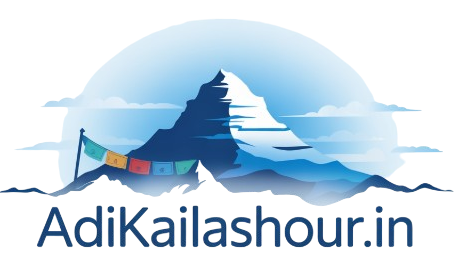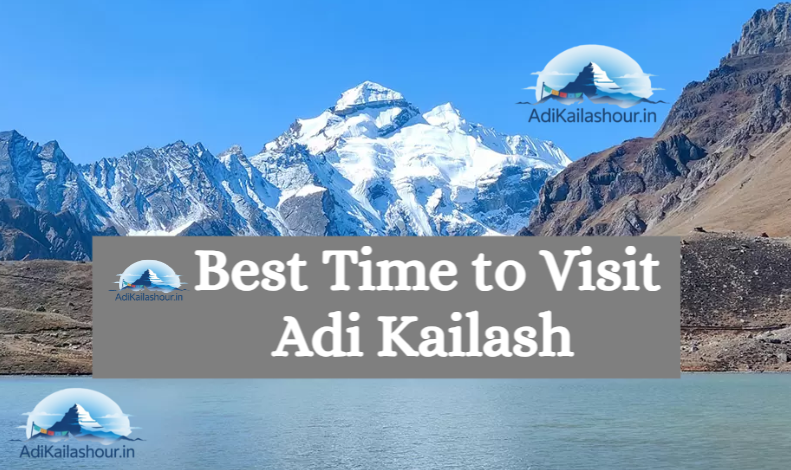The Adi Kailash Yatra, a revered pilgrimage in the Kumaon Himalayas of Uttarakhand, is highly dependent on weather and road conditions. Due to its high-altitude location and proximity to the Indo-Tibet border, the region experiences extreme weather variations throughout the year. Understanding these patterns is key to planning a successful and enjoyable trip.
The pilgrimage season for Adi Kailash generally spans from late spring to early autumn, with specific months being most favorable.
The Best Seasons and Months to Visit Adi Kailash
The ideal time to undertake the Adi Kailash Yatra is typically divided into two main windows:
- Pre-Monsoon Season: May to June
- Post-Monsoon Season: September to Early November
Let’s delve into what each season offers:
1. Pre-Monsoon Season (May to June)
This period is widely considered one of the best times for the Adi Kailash Yatra.
- Weather: The temperatures are relatively mild and pleasant during the day, ranging from approximately 10°C to 20°C. Nights can still be chilly (around 0°C to 5°C).
- Accessibility: The heavy winter snow begins to melt, gradually clearing the trekking trails and opening up the roads, making them more accessible for vehicles.
- Views: You can expect clear skies and good visibility, offering stunning panoramic views of the surrounding snow-capped peaks and vibrant alpine meadows.
- Nature: The landscapes are lush and green, and various alpine flowers, including rhododendrons, are in full bloom, adding to the region’s natural beauty.
- Crowd: This period sees a good number of pilgrims and trekkers, but generally less crowded than some other popular pilgrimage routes.
2. Post-Monsoon Season (September to Early November)
This is another excellent window for the Adi Kailash Yatra, offering a different but equally captivating experience.
- Weather: The monsoon rains have receded, leaving behind crisp, clear air and stable weather conditions. Daytime temperatures range from 5°C to 15°C, with nights becoming considerably colder (around 0°C to -5°C, dropping further in November).
- Accessibility: Roads are generally well-maintained after the monsoon, and trekking paths are clear and less slippery.
- Views: This season offers some of the most breathtaking and unobstructed views of the Himalayas, with clear blue skies providing perfect conditions for photography and spiritual contemplation. The air is exceptionally clear, enhancing distant mountain vistas.
- Nature: The landscape is refreshed and vibrant from the monsoon, often showcasing beautiful autumn hues as the season progresses.
- Crowd: This period is also popular, especially in September and early October, attracting pilgrims who prefer cooler temperatures and crystal-clear views.
Seasons to Avoid or Approach with Caution
1. Monsoon Season (July to August)
While the monsoon brings lush greenery, it is generally not advisable to undertake the Adi Kailash Yatra during these months.
- Weather: Heavy and continuous rainfall is common, leading to increased humidity. Daytime temperatures are generally between 10°C and 18°C.
- Accessibility: This period significantly increases the risk of landslides and roadblocks, making travel difficult, dangerous, and prone to extensive delays. Rivers can swell, and trekking paths become extremely slippery.
- Views: Skies are often cloudy and misty, obscuring the majestic mountain views.
- Permits: Authorities might temporarily suspend the issuance of Inner Line Permits (ILPs) during peak monsoon for safety reasons.
2. Winter Season (November to April)
Visiting Adi Kailash in winter is highly discouraged and generally not possible for pilgrims.
- Weather: The region experiences extreme cold, with temperatures plummeting to sub-zero levels (ranging from -5°C to -30°C or colder), accompanied by strong, biting winds. Heavy snowfall is frequent.
- Accessibility: Most roads leading to the Inner Line area become completely blocked due to heavy snow. Trekking routes are covered in deep snow and ice, rendering them impassable and highly unsafe.
- Closures: The yatra officially remains closed during these months, and local infrastructure (guesthouses, shops) is often shut down.
Key Factors Influencing Your Decision
- Road Conditions: The Border Roads Organisation (BRO) works continuously to keep the roads open, but landslides (especially during monsoon) and heavy snowfall (in winter) can cause closures.
- Inner Line Permit (ILP) Availability: Permits are typically issued only during the favorable seasons when the yatra is officially open.
- Physical Fitness: Regardless of the season, the high-altitude nature of the yatra demands a good level of physical fitness. However, challenging weather conditions in off-seasons require even greater endurance and expertise.
- Photography: If capturing stunning mountain vistas is a priority, the post-monsoon period (September-October) with its clear skies is often considered superior.
- Comfort vs. Adventure: May-June offers relatively more comfortable conditions. September-October can be colder but offers sharper views.
In conclusion, for the most favorable weather, accessible routes, and clear views, the May to June and September to early November periods are the best times to visit Adi Kailash. Always check the latest weather forecasts and road conditions, and consider traveling with a reputable tour operator who stays updated on regional developments.

